Timing Belt Replacement Cost
What you can expect to pay for Timing Belt Replacement
Timing Belt Replacement Cost varies by year, make, model and engine. Generally speaking, the timing belt replacement cost is less for smaller 4-cylinder engines than for larger V-6 engines. But that’s not always the case. The labor involved is directly related to how many components must be removed to access the timing belt and how much room the car maker has left in the engine compartment.
Typical timing belt replacement costs
1996 Honda Civic with A/C and cruise control
Labor to remove the cruise and A/C components and water pump: 3.3-hours of shop time
Parts cost: Timing belt, idler roller, tensioner spring and water pump, coolant $200.00
Total Labor @$110/hr $363
Total Parts $200 $563.00
2008 Audi A4
Labor to replace timing belt, tensioner, bearing and camshaft seals and water pump 5.4-hrs
Parts cost: Timing belt, idlers, tensioner and water pump, coolant $425.00
Total Labor @$110/hr $594
Total Parts $425 $1,019
Others
1998 Toyota Camry 4-cyl $398
2001 PT Cruiser $450
1995 Subaru Impreza $624
1999 Lexus RX300 $780
2006 Hyundai Sonata $500
What gets replaced during a timing belt replacement?
In many engines the timing belt also drives the water pump. Since labor is a substantial portion of the cost to get to the water pump, many shops recommend replacing the water pump at the same times as the timing belt? Does that makes sense, or are the shops trying to rip you off? Well, it all depends on your risk level.
Water pumps don’t last forever. They often start to leak between 125,000 and $150,000 miles. If your car maker recommends timing belt replacement at 60,000 miles, it may not make sense to replace the water pump during your first timing belt change. But it probably does makes sense when you reach 120,000 miles at your second timing belt change. If, on the other hand, your car maker recommends replacing the timing belt at 90,000 miles, you stand a better than average chance of having a water pump failure before your next timing belt change at 180,000 miles. If you pass on the water pump change and the pump fails, you’ll have to pay for the labor portion again.
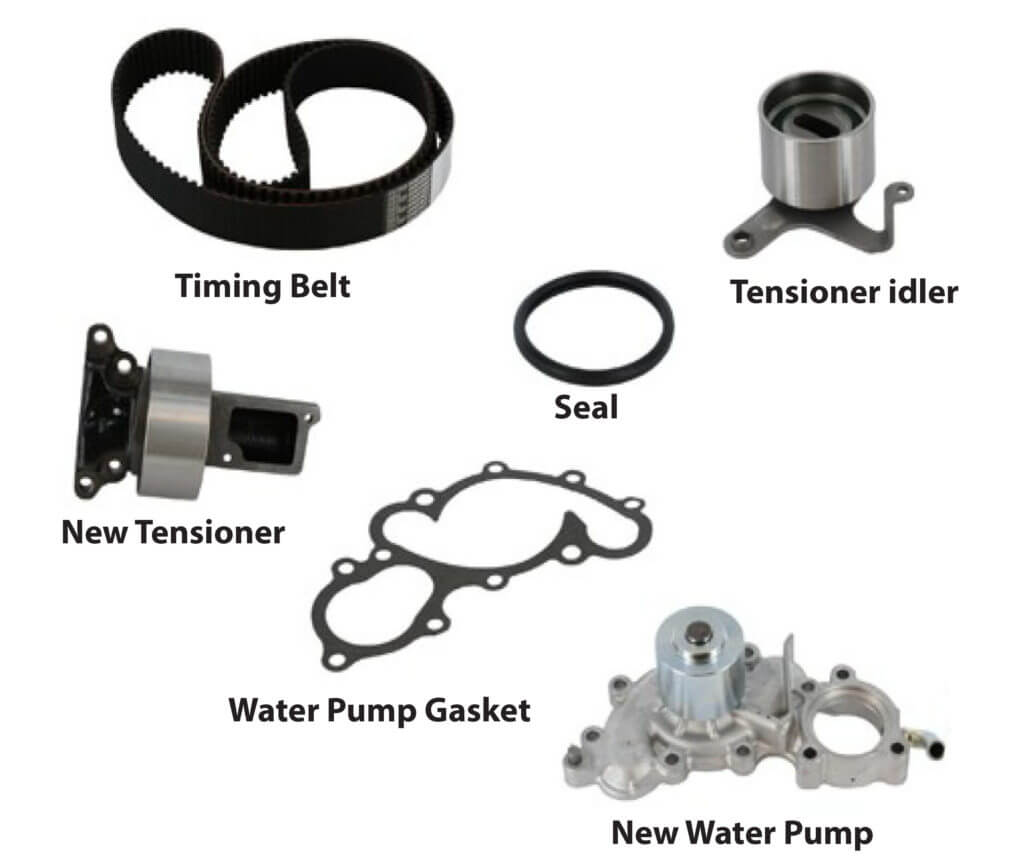
Contents of a timing belt kit
Why car makers use a timing belt instead of a timing chain
Every engine must time the intake and exhaust valve opening to match the position of the pistons. Piston movement is controlled by the crankshaft and valve opening and closing is controlled by the camshaft. So the crankshaft and camshaft must by synchronized perfectly to prevent metal to metal contact. You wouldn’t want the piston to hit a valve while it’s still on its compression or exhaust stroke. That kind of contact would result in catastrophic engine failure.
On older engines, the camshaft was located close to the crankshaft
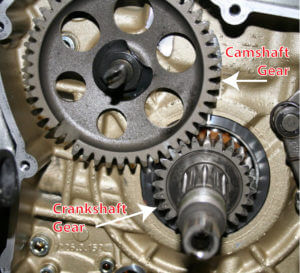
Older Overhead Valve engine with camshaft near the crankshaft and driven by gears. The gears shown here are SPUR gears which can generate grinding and whining noise
and the two were synchronized using a timing gear. That worked ok for those older engines where valve lifters rode on the camshaft and push rods transferred the open and closing motion to the valves via push rods. This engine style is referred to as an OVERHEAD VALVE engine. The downside to a timing gear setup is gear noise. Timing gears can be made with inexpensive spur gears, but they tend to make a grinding/whining noise, especially at higher RPMs.
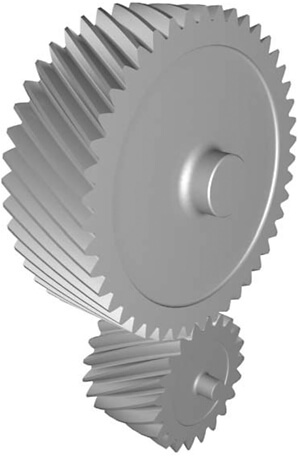
Helical timing gears are quiet but expensive
Helical gears, on the other hand are much quieter. But they’re far more expensive to manufacture, so car makers faced a quandry; how to reduce engine noise, maintain crank-t0-cam synchronization without the high cost of helical gears.
That’s why car makers switched to timing chains
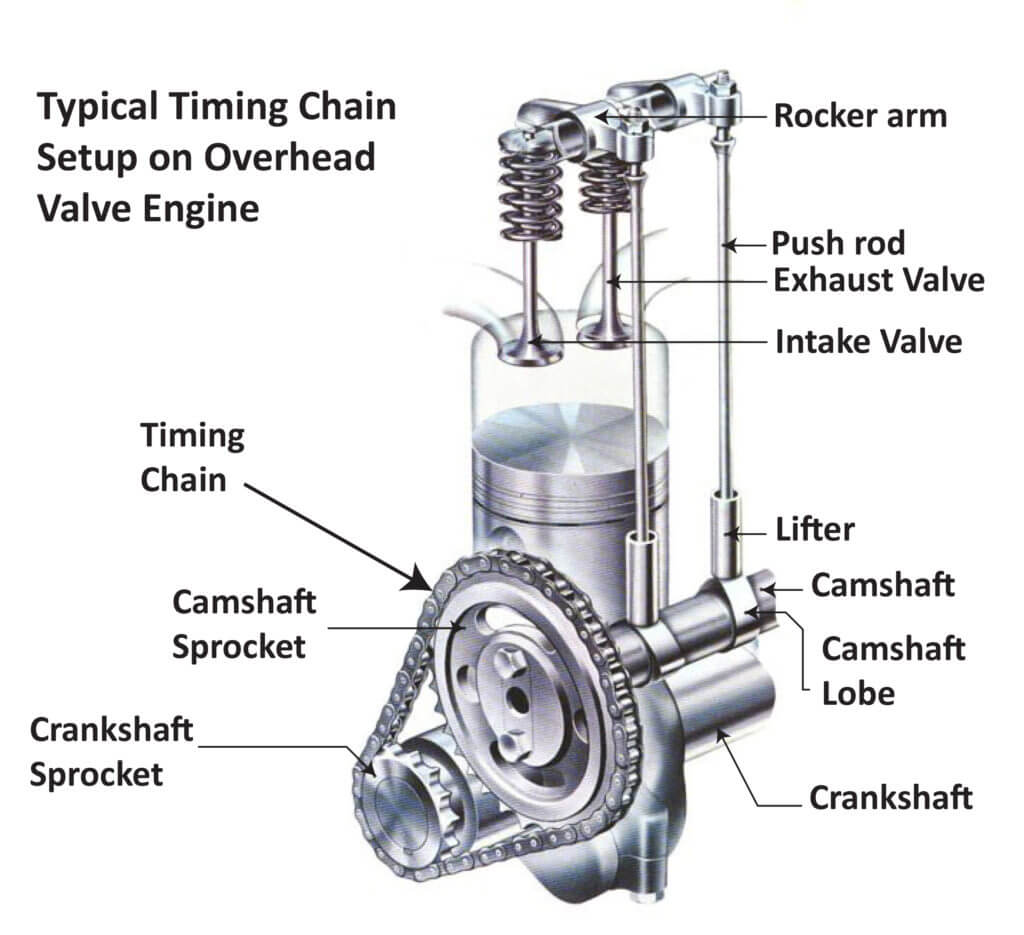
Timing chains produce less noise than spur gears and are cheaper than helical gears. But they do have several downsides. First, they stretch as they wear which requires some type of tensioner to compensate for the stretch. Second, as the spacing between the crank and cam increase, the longer chain sections can create harmonic vibrations; like twanging a guitar spring. So car makers had to install chain guides to dampen the vibrations.
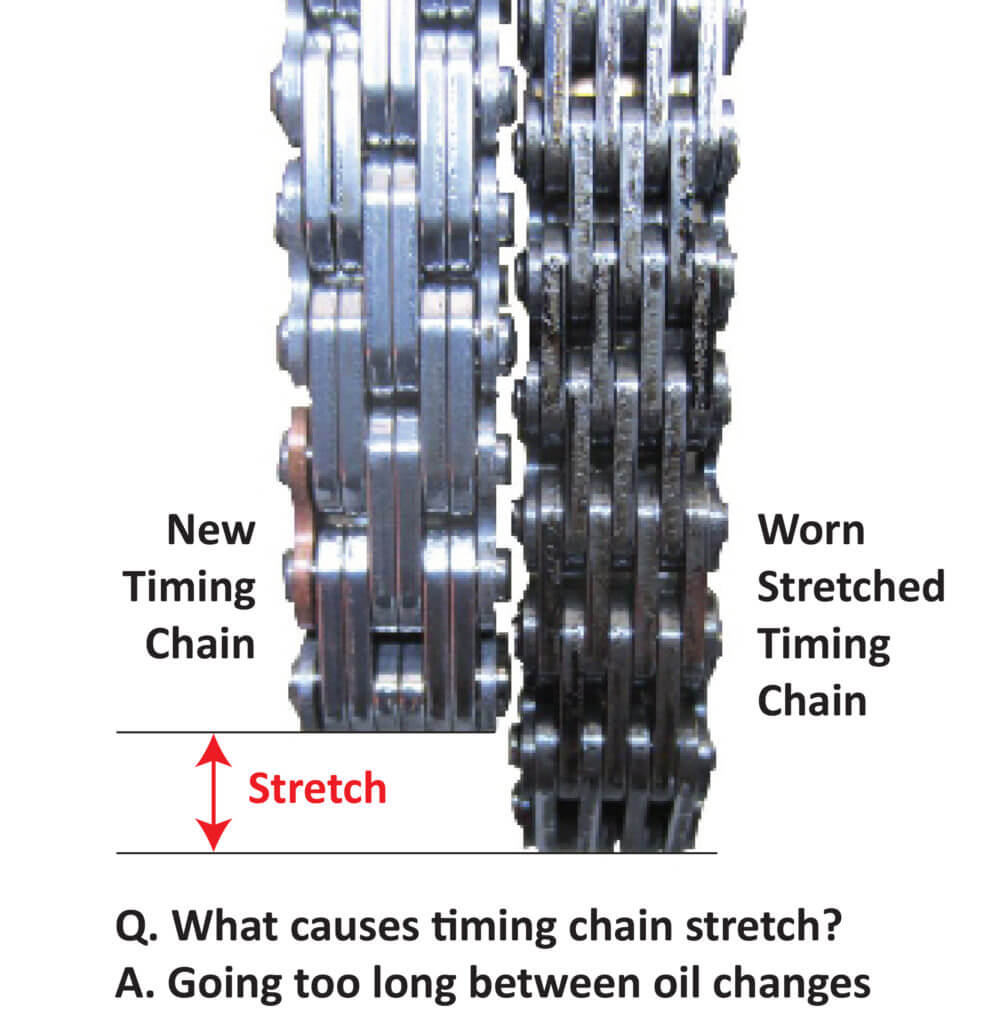
Enter the overhead cam engine
Ultimately, push rod and overhead valve engines were 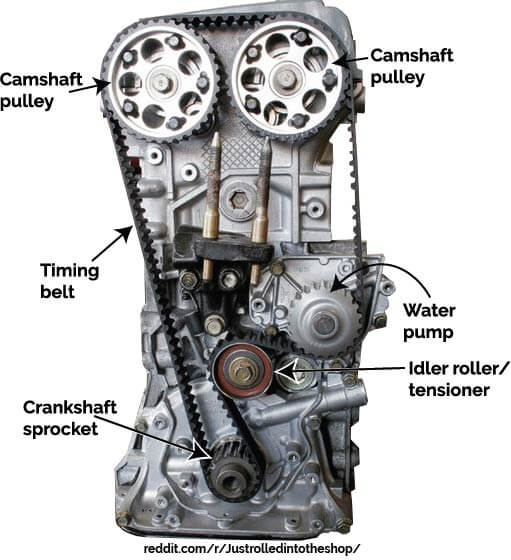 inefficient and gave way to OVERHEAD CAM engines. The camshaft in an overhead cam engine is located above the valves and the design eliminates all the problems associated with energy loss and push rod wear.
inefficient and gave way to OVERHEAD CAM engines. The camshaft in an overhead cam engine is located above the valves and the design eliminates all the problems associated with energy loss and push rod wear.
However, since the camshafts are located so far away from the crankshaft, car makers switch to a timing belt.
Timing belt issues
Every timing belt contains teeth that mesh with a camshaft and crankshaft gear. The belt is made with a heat and chemical resistant rubber and incorporates fiberglass strands to prevent stretching.
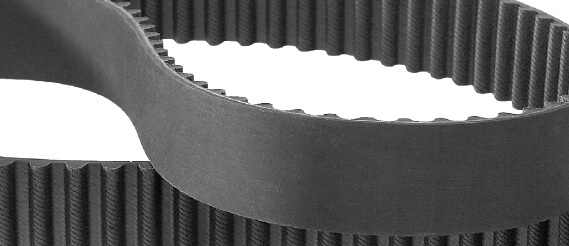
Typical timing belt construction with teeth
Despite the stretch resistant design, timing belts do tend to stretch somewhat over their estimated life. So car makers also use a timing belt tensioner to maintain constant pressure and prevent the belt from “jumping a tooth.”
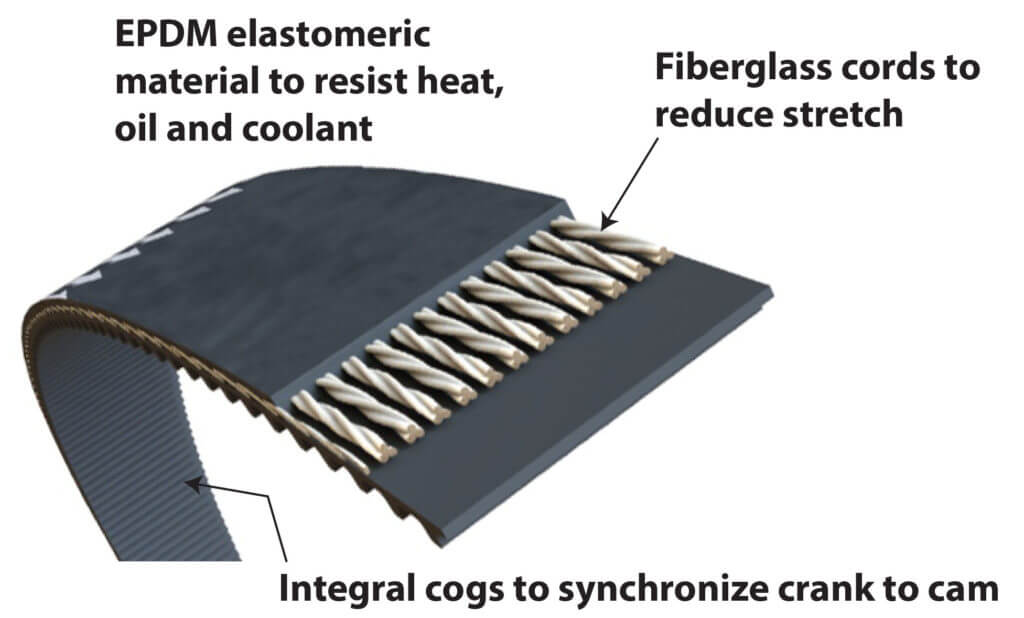
What goes wrong with timing belts?
1) Overall wear and tear from miles of driving.
2. Deterioration from heat and chemicals.
3. Damage from abuse—jack rabbit starts, tensioner failure due to neglected oil changes.
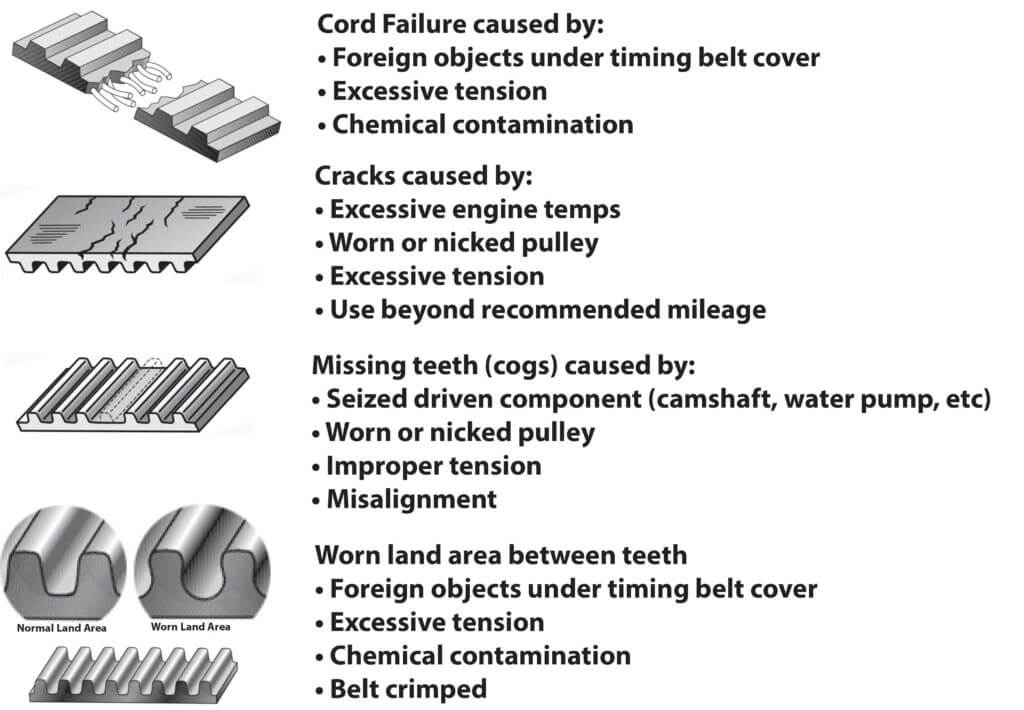
©, 2019 Rick Muscoplat
Posted on by Rick Muscoplat